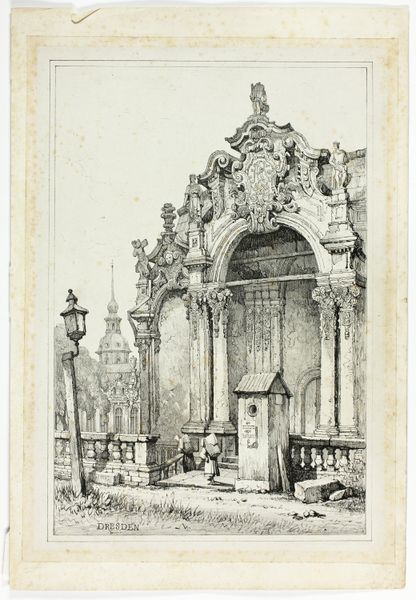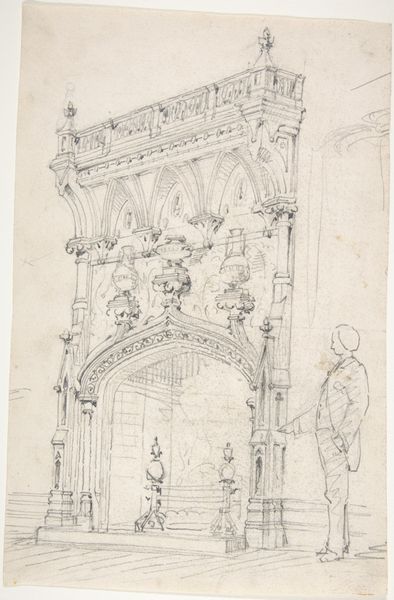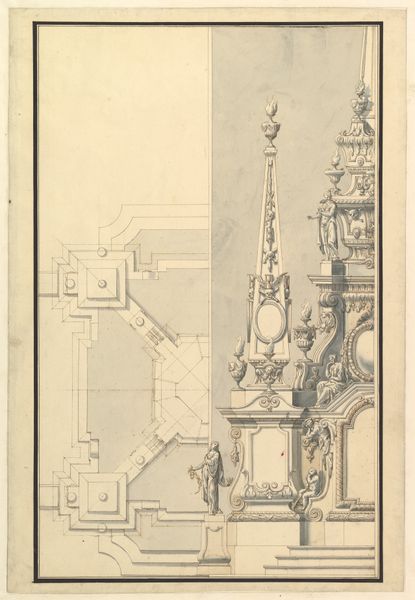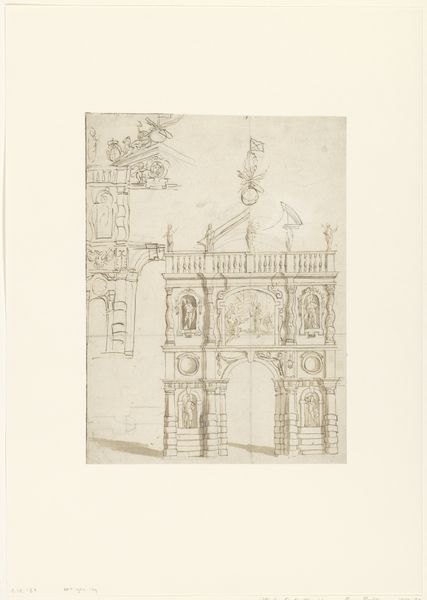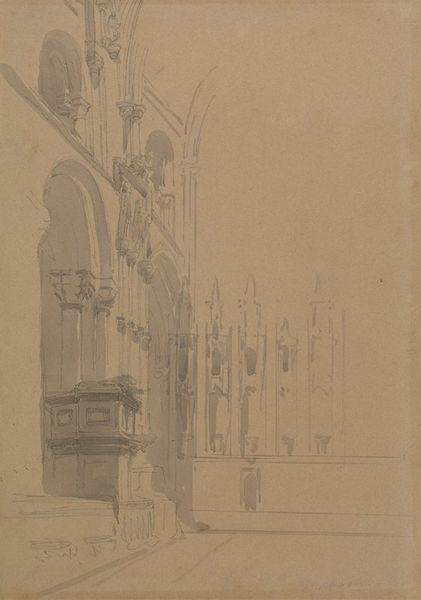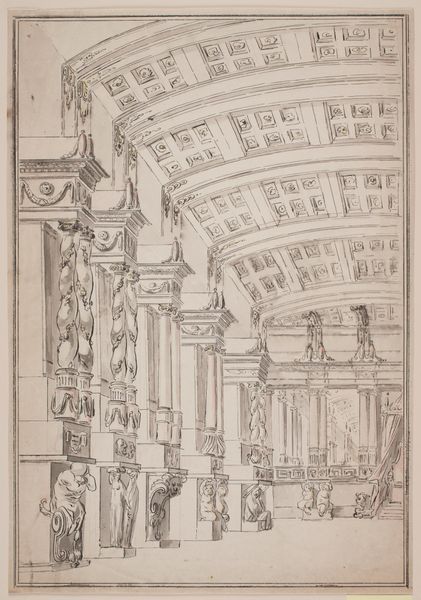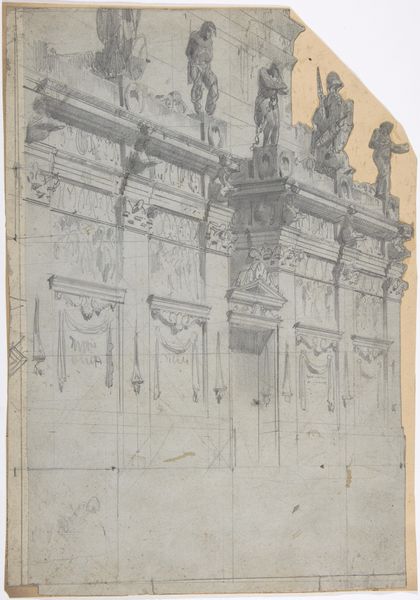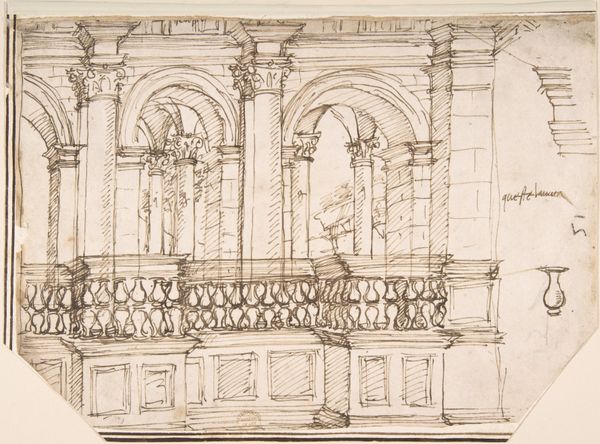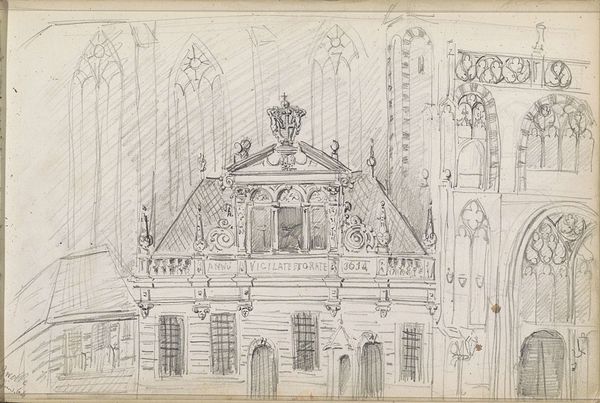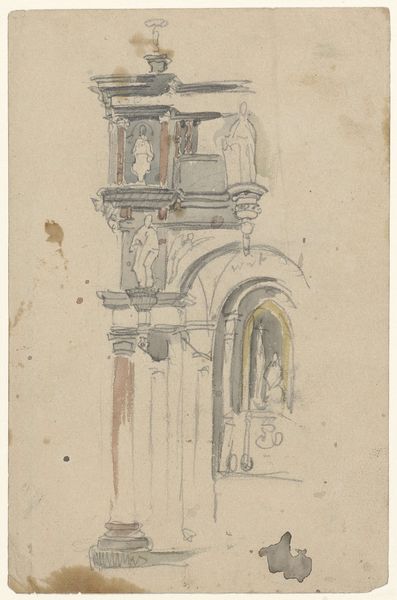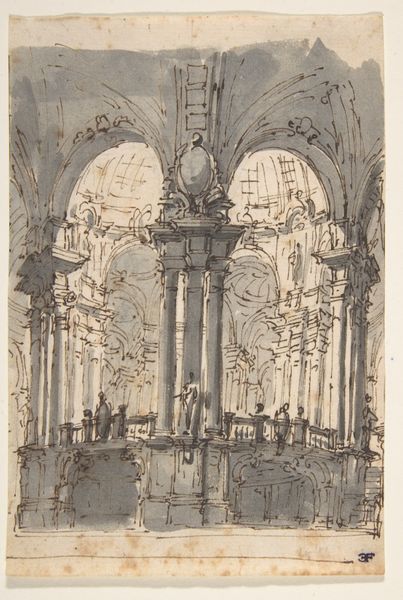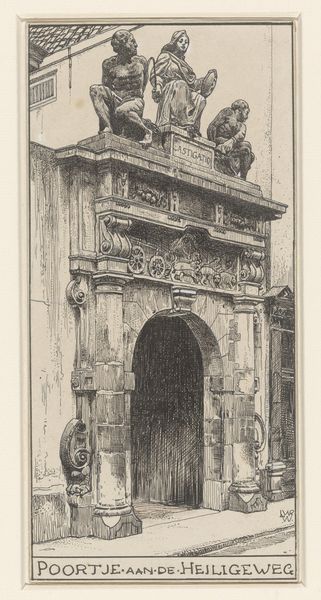
drawing, print, pencil, architecture
#
drawing
# print
#
pen sketch
#
etching
#
romanticism
#
pencil
#
cityscape
#
architecture
Dimensions: sheet: 15 3/4 x 10 1/8 in. (40 x 25.7 cm)
Copyright: Public Domain
Curator: Welcome to the Metropolitan Museum of Art. Here we have Samuel Prout's "The Zwinger, Dresden," created between 1828 and 1838. Prout rendered this cityscape using pencil, pen, and etching techniques to capture the famous Baroque palace. Editor: My immediate reaction is a certain quietude. Despite the grand architecture, the limited palette evokes a sense of intimacy, as if stumbling upon this scene in a dream. The use of light and shadow seems deliberate in highlighting particular features. Curator: Absolutely. Considering the social context, travel prints like this one were becoming increasingly popular, catering to a growing middle class with an appetite for vicarious experiences of European landmarks. Prout was responding to this market, his work embodying both artistic skill and entrepreneurial drive. Note the layering and visible labor involved, creating numerous lines for texture, shade and form in this "pen sketch," a common output of that era. Editor: Precisely. It's all about form, isn't it? Look at the symmetry and the repetition of shapes. The archway is framed by those stately columns, crowned by ornate sculptures. Then, observe how Prout leads our eye upward with the strategic placement of shadow, from the dark recesses within the arch to the subtle gradients defining the statues. The work is grounded within classic semiotic framework. Curator: True, yet it's important to see beyond pure formalism. Who was accessing and consuming these images? They fueled notions of European culture and "high art" to people often far removed from Dresden. This kind of representation upholds social hierarchies of class and cultural capital. Prout created a material object which serves this explicit socio-economical function, irrespective of pure aesthetic appreciation. Editor: I concede the social implications, yet Prout's mastery of light, line, and form contributes significantly to the drawing's emotional resonance. The etching creates a certain nostalgia; look at the lantern, or at the blurred figure atop the stairs—these are all elements that lend themselves toward the emotive depth. Curator: A wonderful observation. It seems this print can offer both aesthetic pleasure and a complex perspective on cultural consumption and socio-historical influences. Editor: Indeed. By examining its forms and their relationships we begin to understand its enduring attraction for subsequent artistic generations.
Comments
No comments
Be the first to comment and join the conversation on the ultimate creative platform.
